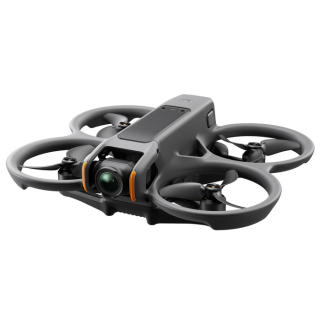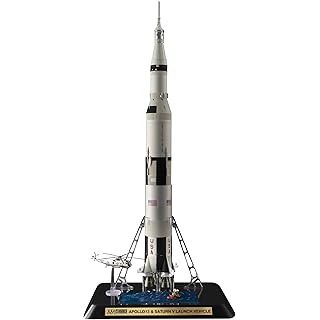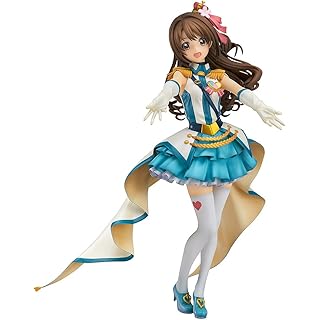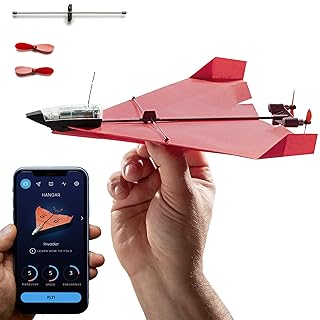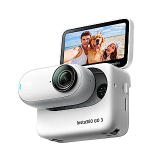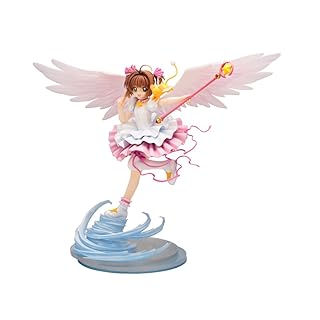 How to use Insta360 STUDIO to edit 360-degree videos on your computer
How to use Insta360 STUDIO to edit 360-degree videos on your computer

You can download the free app "Insta360 STUDIO" from Insta360 download page
For detailed information on how to use the Insta360 X4 camera, please see the How to use Insta360 X4 - 360 degree action camera that can shoot 8K page.
- Connecting a camera and importing videos and photos
- Specifying camera angles for 360-degree video / Setting keyframes
- Tracking people or object / Deep Track
- Playback speed adjustment / Time shift
- Adjusting the playback range / Trimming
- Join videos / Use Project
- How to export videos and photos
- Remove the camera from PC
 Connecting a camera and importing videos and photos
Connecting a camera and importing videos and photos
 After installing Insta360 STUDIO, click
After installing Insta360 STUDIO, click
Connect Insta360 camera to your computer with USB cable. Alternatively, connect a microSD card containing videos and photos taken with the camera to your computer. Or you can drag and drop videos and photos saved on your computer into Insta360 STUDIO.
 When the camera is turned on and connected to a computer using a USB cable, a screen like the one shown on the right will be displayed on the touch screen.
If you select "U-Disk Mode", you can access the camera as a USB memory.
When the camera is turned on and connected to a computer using a USB cable, a screen like the one shown on the right will be displayed on the touch screen.
If you select "U-Disk Mode", you can access the camera as a USB memory.
If you are unable to connect your computer and camera, try restarting your computer and camera.
 Then, dialog box like this will bring up.
Then, dialog box like this will bring up.
Click "Import All" to load all videos / photos on the Insta360 camera into Insta360 STUDIO.
Click "Select File" to open Insta360 camera in Explorer. Select the file you want to load.
Note that "import" here simply means loading the "file list" from the storage into Insta360 STUDIO. Videos and photos themselves are not copied to your computer.
When loading a video in File Explorer, select either ".insv" (360-degree video), ".mp4" (flat video), or ".insp" (360-degree photo) files. Do not select ".lrv" files, as these are low-resolution files for preview.
 When loading is complete, you will see a screen like this.
The left side of the screen displays a list of thumbnails of the videos and photos loaded into the app.
Currently selected video / photo is displayed on the right side of the screen, and you can play it back and perform various processing / trimming.
When loading is complete, you will see a screen like this.
The left side of the screen displays a list of thumbnails of the videos and photos loaded into the app.
Currently selected video / photo is displayed on the right side of the screen, and you can play it back and perform various processing / trimming.
It's easy to use. Just double-click the video or photo you want to edit from the thumbnail on the left of the screen, and then click each icon on the screen to edit it. Hover your mouse over each icon on the screen to see a description of its function.
 Clicking the icons on the right side of the screen allows you to configure settings such as FlowState image stabilization, stitching method, FOV (field of view), image processing (Color Vivid, Vivid Plus, AquaVision), watermark, audio noise cancellation, and dashboard (display of speed, acceleration, location information, etc.).
You can also view media information such as shooting date and time, resolution, and bitrate.
Clicking the icons on the right side of the screen allows you to configure settings such as FlowState image stabilization, stitching method, FOV (field of view), image processing (Color Vivid, Vivid Plus, AquaVision), watermark, audio noise cancellation, and dashboard (display of speed, acceleration, location information, etc.).
You can also view media information such as shooting date and time, resolution, and bitrate.
To embed the dashboard in a video, you need to connect the Insta360 GPS Preview Remote during recording and record GPS information in the video.
 Click the icons to the right of the video to switch aspect ratios, capture the video, or display it in full screen.
Click the icons to the right of the video to switch aspect ratios, capture the video, or display it in full screen.
 You can turn on/off motion noise reduction by clicking the
You can turn on/off motion noise reduction by clicking the
 Specifying camera angles for 360-degree video / Setting keyframes
Specifying camera angles for 360-degree video / Setting keyframes
For 360-degree videos, you can specify/change the camera angle after shooting.
You can specify the camera angle using "keyframes." Set "keyframes" at key points in the video and specify the "viewing direction" for each "keyframe." Then, the angle will change smoothly as the video plays.
 Drag the screen to decide the camera angle, and tap the
Drag the screen to decide the camera angle, and tap the
 A yellow round icon
A yellow round icon
Drag the white cursor bar left and right on the timeline to determine where you want to set the next "keyframe". Then drag the screen again to determine the camera angle. Or, you can use the mouse scroll wheel to specify the FOV (field of view). Once you have determined the angle and FOV, tap the
Repeat this until the end of the video to complete the camera angle setting.
When you place the white cursor bar over a keyframe, a small "x" icon will appear below it. Clicking this will allow you to delete the keyframe.
You can also fine-tune the camera angle in the window that appears when you click a keyframe. You can directly specify the pan, tilt, roll, FOV, and distortion correction values.
 Tracking people or object / Deep Track
Tracking people or object / Deep Track
The camera angle can automatically change to follow people or objects on the screen.
This is called Deep Track.
 Click the
Click the
 Tracking will then begin.
A green band will appear on the timeline.
Click the "Stop Tracking" button to end tracking.
Tracking will then begin.
A green band will appear on the timeline.
Click the "Stop Tracking" button to end tracking.
 If you click on the green band on the timeline, a window like this will appear.
You can adjust the FOV here.
Or you can delete the deep track by clicking the trash icon shown here.
If you click on the green band on the timeline, a window like this will appear.
You can adjust the FOV here.
Or you can delete the deep track by clicking the trash icon shown here.
 Playback speed adjustment / Time shift
Playback speed adjustment / Time shift
You can change the playback speed of parts of a video.
You can play highlights in slow motion, or fast forward moving scenes.
 Clicking the
Clicking the
 When you click on the red band on the timeline, a window like this will appear.
You can adjust the playback speed.
Or you can delete the timeshift by clicking the trash icon shown here.
When you click on the red band on the timeline, a window like this will appear.
You can adjust the playback speed.
Or you can delete the timeshift by clicking the trash icon shown here.
 Adjusting the playback range / Trimming
Adjusting the playback range / Trimming
You can hide unnecessary parts at the beginning and end of the video.
 Click the
Click the
 Join videos / Use Project
Join videos / Use Project
The "Project" feature allows you to join multiple videos together.
After you've set keyframes and other effects for each video clip, you can use the project to join them together into a single video.
 When you click "Project" at the top of the screen, you will see the screen on the right.
You can start a project by clicking the "New Project" button.
You can set the project name, save path, aspect ratio, etc.
When you click "Project" at the top of the screen, you will see the screen on the right.
You can start a project by clicking the "New Project" button.
You can set the project name, save path, aspect ratio, etc.
 You can operate your project on a screen like this.
It can be operated in the same way as with general video editing software.
You can operate your project on a screen like this.
It can be operated in the same way as with general video editing software.
Select the video/music/text/transition (screen change effect) you want to use from the top left of the screen and drop it onto the timeline at the bottom of the screen. When you're done editing, click the
 How to export videos and photos
How to export videos and photos
 Once you're done editing, click the
Once you're done editing, click the
 Then you can see a dialog box like this.
You can specify the output file name, folder you want to store, bit rate, resolution, frame rate, format, etc.
Click "Export" at the bottom right of the screen to store the edited video in the specified folder on your computer.
Then you can see a dialog box like this.
You can specify the output file name, folder you want to store, bit rate, resolution, frame rate, format, etc.
Click "Export" at the bottom right of the screen to store the edited video in the specified folder on your computer.
 When exporting photos, the screen will look like this.
You can select "360 degree photo" or "Animate" with the switch at the top center of the screen.
Animate turns your photo into a flat video that automatically animates.
Tap the templates lined up at the bottom of the screen to switch the animation.
When exporting photos, the screen will look like this.
You can select "360 degree photo" or "Animate" with the switch at the top center of the screen.
Animate turns your photo into a flat video that automatically animates.
Tap the templates lined up at the bottom of the screen to switch the animation.
 For interval/starlapse photos, you can choose to export the photos individually, or combine them and export them as a video or composite photo.
For interval/starlapse photos, you can choose to export the photos individually, or combine them and export them as a video or composite photo.
As shown in the figure, you can click the "Select All" checkmark at the bottom right of the screen to export all photos at once.
Or you can select several photos from the thumbnails below and export only the selected photos at once.
 When you have finished selecting the thumbnails you want to export, click the
When you have finished selecting the thumbnails you want to export, click the
When exporting as a photo, you can choose aspect ratio, resolution, and automatic horizontal correction.
 If you want to export an Interval/Starlapse photo as a video or a single composite photo (Startrail photo), double-click the Interval/Starlapse photo from the list on the left, then click
If you want to export an Interval/Starlapse photo as a video or a single composite photo (Startrail photo), double-click the Interval/Starlapse photo from the list on the left, then click
If some thumbnails are selected accidentally, click them again to deselect, or click the "Select All" checkmark at the bottom right of the screen twice to change to "Deselect All" status.
 You can select "Reframe photo export" or "360 photo export" in the top column of the screen.
You can select "Reframe photo export" or "360 photo export" in the top column of the screen.
You can also select the output method shown in the table below in the "Export type" field. You can select resolution, frame rate, image stabilization type, etc. for each output method you select.
| Item | Description |
|---|---|
| Output format | Video in mp4 format, the stars draw a tail |
| frame rate | 24 / 25 / 30 / 50 / 60 fps |
| star trail length | long / medium / short |
| Image stabilization | Fixed position / Moving |
| Item | Description |
|---|---|
| Output format | Combine all frames into one jpg photo. Can also be specified for interval shooting. |
| Image stabilization | Fixed position / Moving |
| Item | Description |
|---|---|
| Output format | Video in mp4 format |
| frame rate | 24 / 25 / 30 / 50 / 60 fps |
| Image stabilization | Fixed position / Moving |
| Item | Description |
|---|---|
| Output format | Output all frames individually as jpg photos. Only output folder can be specified |
| Image stabilization | Fixed position / Moving |
 Remove the camera from PC
Remove the camera from PC
 When disconnecting the camera from the computer, first close the Insta360 STUDIO app.
Then, in the same way as when removing the USB memory, first perform the "eject" operation of the drive and then remove it.
Otherwise, videos and photos stored in the camera may be corrupted.
When disconnecting the camera from the computer, first close the Insta360 STUDIO app.
Then, in the same way as when removing the USB memory, first perform the "eject" operation of the drive and then remove it.
Otherwise, videos and photos stored in the camera may be corrupted.








